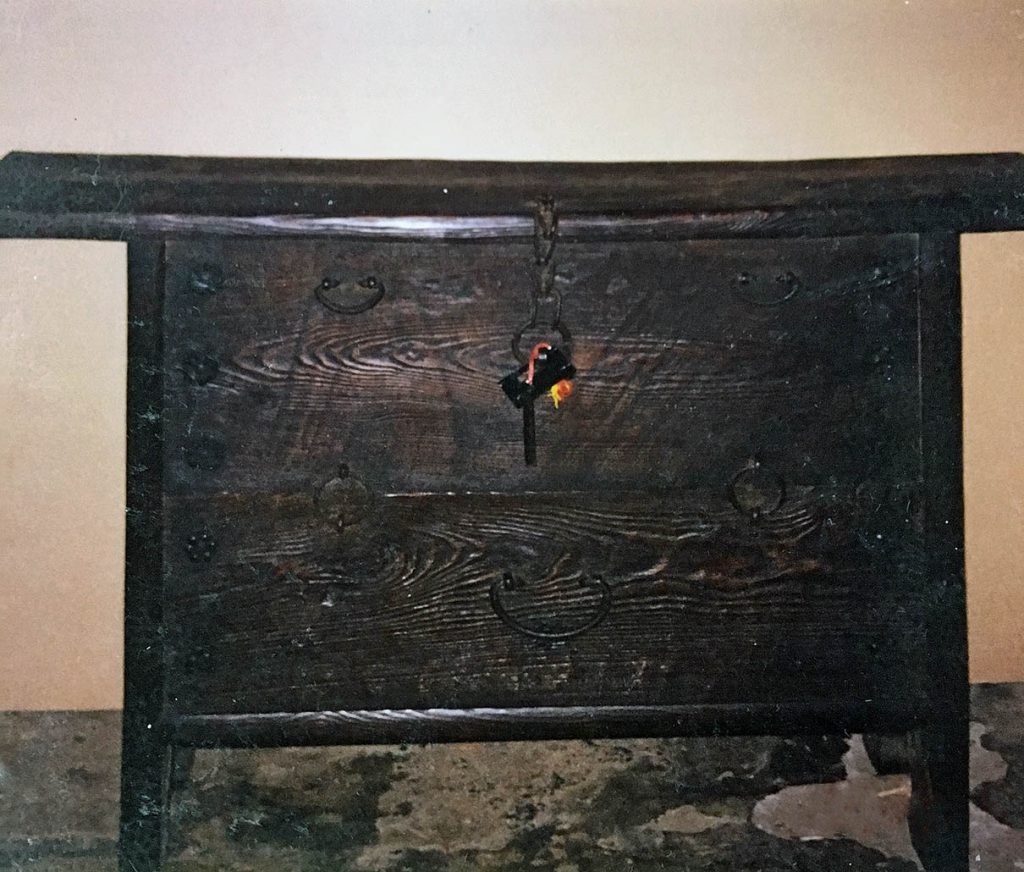
1850 or earlier; chestnut or zelkova with dragon pattern grains; primitive iron fittings; found on Kang Wha Island. H: 36″, L: 55″, D: 16″
This chest is made from Zelkova, a wood that shows so many impressive grain patterns resembling coiled dragons that the Korean craftsmen named the wood “Dragon Wood”. This wood was highly prized in both Korea and Japan because the dragon signifies a heavenly king. This plain-looking chest, with its well-extended top made of a slab of Dragon Wood and a solid wood body, exudes a quietness and dignity that does not blatantly call attention to itself with colorful material decorations but instead, let the wood speaks for itself.
During the lengthy Chosen Dynasty (1392-1910), the ruling class was made up of Confucius era scholars. These scholars were adherents of Taoism and Buddhism, favoring furniture that has simplicity of form, made from wood that is dense, durable, and has distinguish grain patterns that stands well in the male quarter of a serious scholar’s house. They also prefer any external metal fixtures, such as hinges, hand-pulls, and lock-plates or chains to be made of the humble iron.
This chest was recovered from Kang Wha Island by an American medical missionary doctor who went to Korea after the Japanese Occupation to treat the sick and the dying. The island was a political prison colony where many royal court members and high officials in dispute with the ruling class were sent into exile during the Chosen Dynasty. The doctor was allowed to take away treasured furniture the exiled took to the prison because the scholarly ruling officials loved arts such as vases, calligraphy, and paintings but did not care for wood furniture. In time, the doctor passed the furniture to his Korean professor son who became one of only thirteen antique appraisers approved by the Korean government.
This chest was certified by the professor as ca 1850 (19th century) when sold. It is not exactly correct and not surprising that happened because during the second half of the Chosen Dynasty, the conservative nature of Korean society made Korea known as “The Hermit Kingdom”. It was pretty much cut off from the outside world. Furniture-making tradition was relatively unchanged from the earlier Koryo Dynasty period, particularly since the 17th century. This factor leads to difficulties in the dating of Korean furniture. The majority of extant furniture, therefore, dates to the 19th and early years of the 20th century, although some 18th century, and more rarely, 17th century pieces exist. The last are usually found in museums. This simple-looking but majestic piece qualifies to be in a museum.